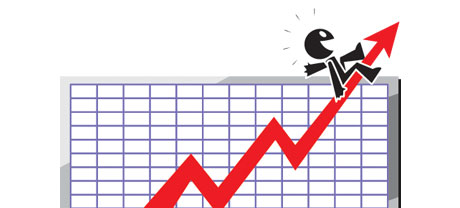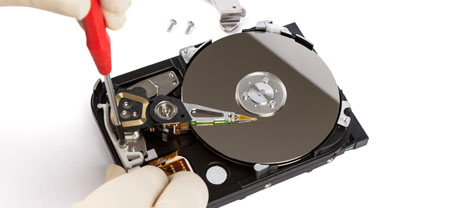For those who have a site or an app, pace is crucial. The swifter your website performs and the swifter your apps operate, the better for everyone. Because a web site is only an assortment of data files that connect with one another, the devices that keep and work with these files play a vital role in web site efficiency.
Hard drives, or HDDs, were, until recent years, the most trusted products for storing data. Having said that, lately solid–state drives, or SSDs, have already been gaining popularity. Take a look at our comparability chart to find out whether HDDs or SSDs are more suitable for you.
1. Access Time
With the launch of SSD drives, file access speeds are now tremendous. Due to the completely new electronic interfaces utilized in SSD drives, the regular file access time has been reduced towards a record low of 0.1millisecond.
HDD drives still work with the same general data access concept which was originally created in the 1950s. Even though it has been substantially improved since that time, it’s sluggish in comparison with what SSDs are providing. HDD drives’ file access speed ranges in between 5 and 8 milliseconds.
2. Random I/O Performance
The random I/O performance is very important for the operation of any data file storage device. We have run in depth assessments and have established that an SSD can manage a minimum of 6000 IO’s per second.
Hard drives offer reduced data file access speeds due to older file storage space and access technology they are using. And in addition they illustrate substantially sluggish random I/O performance when compared to SSD drives.
For the duration of Unilakes Cloud’s tests, HDD drives managed on average 400 IO operations per second.
3. Reliability
SSD drives are designed to have as fewer moving elements as possible. They utilize an identical technology like the one utilized in flash drives and are also more dependable as opposed to conventional HDD drives.
SSDs come with an common failure rate of 0.5%.
For the HDD drive to work, it must rotate a few metal disks at more than 7200 rpm, having them magnetically stabilized in mid–air. They have a many moving components, motors, magnets and other gadgets crammed in a tiny space. So it’s obvious why the common rate of failure associated with an HDD drive can vary in between 2% and 5%.
4. Energy Conservation
SSD drives operate almost silently; they don’t make surplus warmth; they don’t require more air conditioning solutions as well as consume much less electricity.
Trials have demonstrated that the typical electric power usage of an SSD drive is amongst 2 and 5 watts.
From the time they were constructed, HDDs have been very electric power–hungry systems. And when you’ve got a server with a couple of HDD drives, this will likely raise the month to month utility bill.
On average, HDDs use up between 6 and 15 watts.
5. CPU Power
SSD drives provide for a lot faster data access rates, which generally, subsequently, permit the processor to perform data requests considerably faster and to return to other responsibilities.
The standard I/O wait for SSD drives is barely 1%.
When using an HDD, you need to invest extra time looking forward to the results of your data file ask. Consequently the CPU will be idle for further time, waiting around for the HDD to react.
The normal I/O delay for HDD drives is about 7%.
6.Input/Output Request Times
In the real world, SSDs function as wonderfully as they managed during our trials. We competed an entire system back up on one of the production servers. Throughout the backup process, the typical service time for any I/O queries was under 20 ms.
Compared to SSD drives, HDDs provide noticeably slower service times for input/output calls. Throughout a server backup, the common service time for an I/O query ranges between 400 and 500 ms.
7. Backup Rates
Another real–life advancement is the speed with which the backup is developed. With SSDs, a server data backup now can take no more than 6 hours implementing Unilakes Cloud’s web server–optimized software solutions.
Alternatively, with a server with HDD drives, the same back–up might take 3 to 4 times as long in order to complete. A complete back up of any HDD–equipped web server typically takes 20 to 24 hours.
If you want to without delay add to the general performance of your web sites without the need to change any code, an SSD–driven web hosting solution will be a great choice. Have a look at Unilakes Cloud’s Linux web hosting packages as well as the VPS service – our solutions feature quick SSD drives and can be found at the best prices.
Hepsia
- Live Demo
Service guarantees
- All of our Virtual Private Servers include no setup service fees and operate in a reliable network delivering 99.9% of uptime. Full root/administrator access to the server warranted.
Compare our prices
- Very easily compare the resources and features supplied by Unilakes Cloud’s Virtual Private Servers. Find which VPS package will give you just what you will want to take care of your dynamic online presence easily.
- Compare our hosting plans
Contact Us
- We are online for you 24/7 to resolve any queries in relation to our VPS platform. 1–hour response time guarantee.















